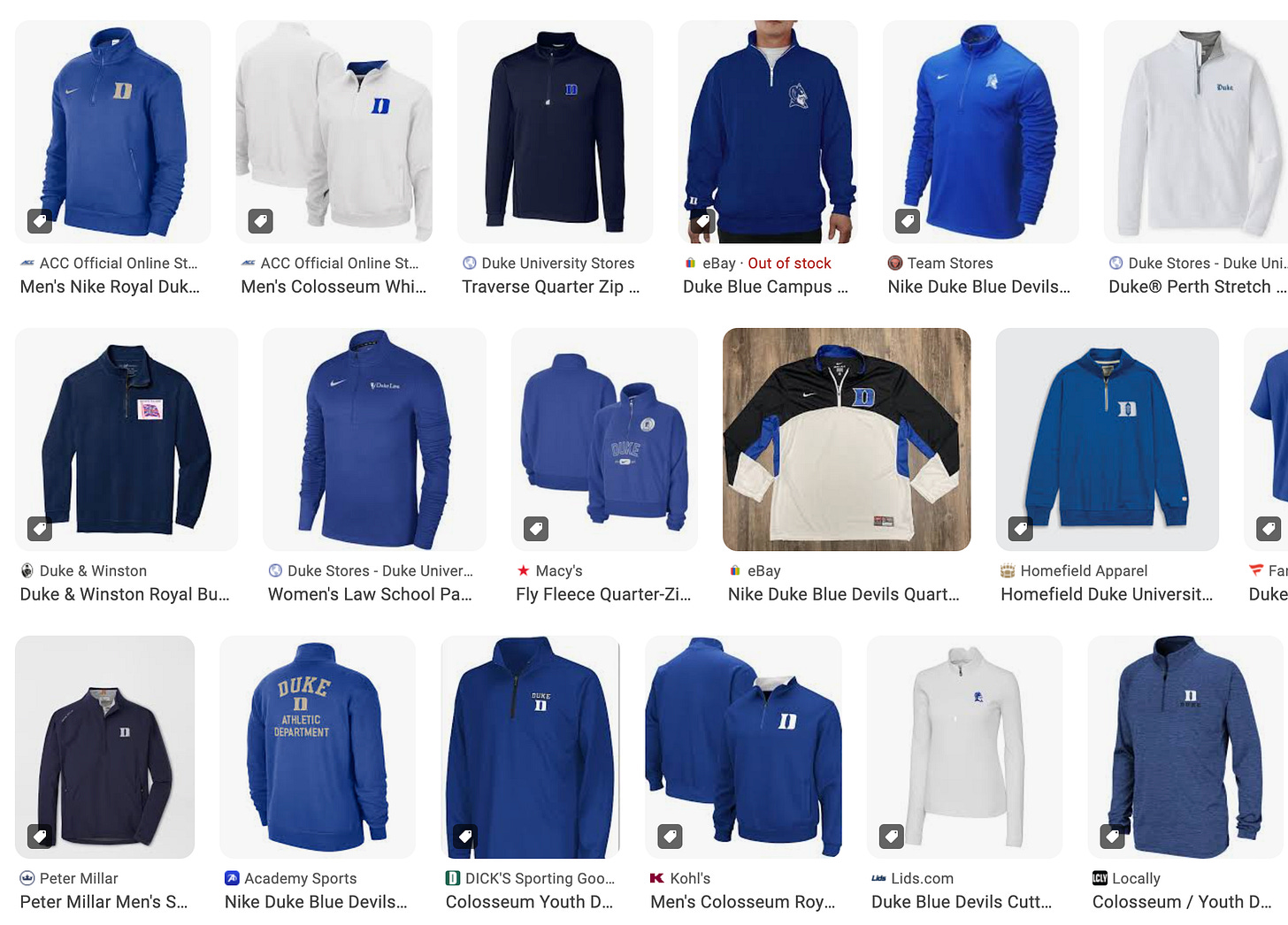The Houston Cougars in the Land of the Quarter Zips
Never Bet Against the Public School
When you Google “Houston Cougars Basketball Head Coach” and click on the images tab, you’ll see pictures of the nearly 70 year-old Kelvin Sampson in crumply polos and suits. You might click into his Wikipedia page and note his first coaching job was on the 1979 Michigan State team with Magic johnson, or that in 2008 he was forced to resign from the head man job at Indiana for the terrible, no good, very bad crime of—brace yourself—texting recruits.
When he was allowed back into college basketball in 2014, the University of Houston hired him. He rebuilt the program from a sticky, smelly substance vaguely resembling something basketball-esque and into a powerhouse. Over the last three years, the Houston Cougars teams have finished second in Ken Pom’s advanced stats. Always the bridesmaid, never the bride.
When you Google “Duke Blue Devils Basketball Head Coach,” you’ll mostly find pictures of Mike Krzyzewski, who retired from the job three years ago.
If you look closely, you might find pictures of Jon Schyer. He is 37 and wears a lot of quarter zips. He played guard for four years at Duke, then for minor leagues in exotic locales like Spain, Israel, and Edinburgh, Texas. His only coaching jobs have been assistantships at Duke, where Krzyzewski hired him in 2014.
Their teams are built very differently. Duke tries, and generally succeeds, at doing everything well. Houston relies on crashing the boards and winning the rebound battle. In terms of roster construction, all but one member of Houston’s starting five are upperclassmen but three of Duke’s starters are freshmen: a five-star wing, a five-star center, and a five-star stretch named Cooper Flagg. He is a phenomenal basketball player who also has the misfortune of having the most “I-went-boarding-school” face in history (Editor’s note: he went to boarding school).
Duke and Houston are also, of course, very different schools. The New York Times has described Duke as “the least economically diverse top-ranked college in the U.S.” In 2013, 56% of students came from the top 10% highest-earning families in the United States. It is, unsurprisingly, a private school. The University of Houston, though, is a public school that accepts two-thirds of its applicants. 44% of its students receive pell grants. In 2010, U.S. News & World Report ranked Houston as the second-most ethnically diverse research university in the United States (Rutgers beat it out by 0.01 in the Report’s diversity index).
Before they met in the Final Four, CBS threw up a peculiar graphic. It said something to the effect of “Unmovable Object (Houston) meets Unstoppable Force (Duke).” I questioned the implied sentence structure. Forces meet objects. Objects don’t move.
At any rate, for most of the game it looked like the Unstoppable Force of the Upper Class was going to grind the Unmovable Object of the Proletariat. Houston took a 6-5 lead, then Duke stepped on the gas. I stopped paying attention. I muted the TV until the last five minutes, and Houston turned in a jaw dropping comeback that was propelled by tenacious defense bordering on the irrational. Houston did not need a miracle three to win. They got a slam dunk to put them one point from the lead, then hit two free throws to put them over the top.
During Duke’s last meaningful possession, the Blue Devils ran a very simple play called “give the ball to Cooper.” It did not work. He tried to finesse open look with fancy ball handling, but ultimately had to attempt a bad mid-range two that clanged off the rim and into the narratively satisfying arms of Mylik Wilson, Houston’s 6’3” senior guard who started his career as a barely recruited three-star.
The Florida-Houston championship game to be played tonight does not carry with it the same class-based heft of the Duke-Houston game, and I don’t know enough about basketball to write a semi-accurate four-thousand word preview like I did for the Super Bowl. Instead, I will encourage everyone to cheer very loudly for Houston because if they win I’ll somehow finish second in my bracket pool.


